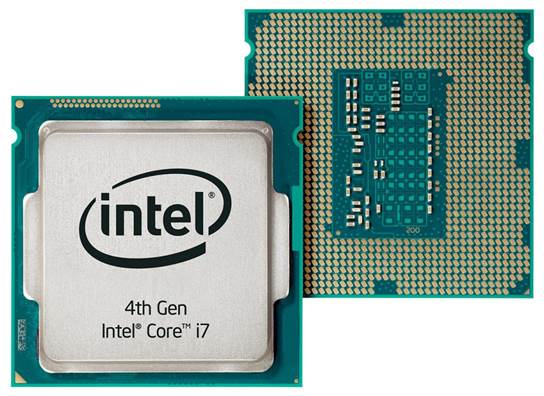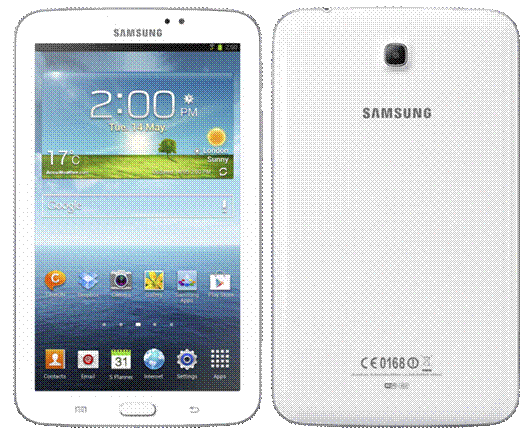Haswell offers ‘better performance’
and ‘reduced power consumption’ than predecessor Ivy Bridge
Intel has launched the fourth generation of
its Core processor series. The quad-core chips, codenamed Haswell, offer better
performance and the biggest increase in battery life in Intel’s history, says
the firm.
Intel refutes the idea that we are living
in a post-PC world. It believes the PC is becoming a more diverse, portable and
consumer-friendly beast, and its processors are now better equipped than ever
to meet that challenge. The distinct worlds of smartphones and desktop PCs are
converging, and it is at this sweet spot that Haswell chips are aimed. Indeed,
it is promoting the fourth-gen chips as part of a move toward two-in-one
computing.

Intel
has launched the fourth generation of its Core processor series
Intel has also revised the minimum spec for
Ultrabooks. Such laptops must now be no thicker than 25mm, and include both a
touchscreen and voice control. In battery mode they also have to last seven
days on standby, and nine hours when idling.
Intel believes its fourth-gen Core
processors are perfectly designed for all-in-one PCs, too. To this end, it has
focused on lower power consumption and stronger integrated graphics. The new
low-voltage processors have a thermal design power (TDP) as low as 7W, which is
much lower than the 17W of some third-generation Ultrabook processors.
If PC makers use this feature wisely it
could mean a big breakthrough in battery life, but in the past many have taken
the opportunity to build in cheaper batteries.

Intel
has also revised the minimum spec for Ultrabooks
The chips
Intel has introduced four mobile and three
desktop Haswell chips. The H-, M-, U- and Y-series processors are aimed at
laptops and tablets, the K-series are enthusiast processors intended to be
overclocked for extreme performance, and the S- and T-series are low- power
chips for desktops.
We saw the die map of a fourth-generation
Core processor, built on a 22-nanometre process, with Tri-Gate 3D transistors.
An L3 cache is shared across all four cores and the GPU, with 1.4 billion
transistors on a 177mm2 die.
As part of Intel’s drive toward portability
it has moved from a traditional two-chip platform to a single-chip BGA solution
with the CPU and platform controller hub (PCH) integrated into a single
package.
Integrated graphics are an important factor
when it comes to battery life - if they aren’t up to the job then PC makers
will fit power-hungry graphics cards. Intel says it has improved its already
impressive onboard graphics with the addition of features such as faster Intel
Quick Sync Video, Jpeg and Mpeg decoding, OpenCL 1.2 support and three-screen
collage display. There is enhanced 4Kx2K support, plus double the bandwidth
with DisplayPort 1.2. Intel has added Iris Pro graphics with integrated
on-package EDRAM memory and API support for DirectX 11.1, OpenCL 1.2 and OpenGL
4.0. It should, Intel says, add up to twice the graphics performance for fourth-gen
Ultrabooks when compared to those with third-gen processors.

The
‘Haswell’ fourth-gen core processor
As well as the existing Intel HD Graphics
4000, look for Intel Iris Pro Graphics 5200, Intel Iris Graphics 5100 and Intel
HD Graphics 5000, plus Intel HD Graphics 4600, 4400 and 4200.
Intel has also improved Wireless Display.
Wireless Display 4.1 includes such features as low power panel self-refresh,
reduced latency and a touch-first interface.
There’s support for more USB devices and
full-resolution S3D, too.
Samsung chooses Intel over ARM for its
3rd-gen Galaxy Tabs
Galaxy Tab 3 8in and 10.1in are powered by
1.5 and 1.6GHz Intel Atom dual-core processors.
Following the unveiling of its Galaxy Tab 3
7in, Samsung has announced two more Galaxy Tab 3 tablets, but this time running
Intel Atom chips.
Samsung has taken off the wraps from its
Galaxy Tab 3 8in and 10.1in, which are the first Android tablets made by the
company to feature Intel rather than ARM processors.

Samsung
Galaxy Tab 3
Samsung said in a statement: “In order to
meet the demand from our vendor/carrier partners and provide a consistent
high-quality experience for customers, Samsung has sourced components,
including chipsets, from trusted partners.”
It represents a big win for Intel in the
mobile market: the firm has previously struggled to compete with the dominance
of ARM. Samsung is the biggest vendor of Android tablets in the world and has a
market share of 18 percent, according to IDC.
The firm said that each model will arrive
globally in June, and will be available in the UK later this year. Models with
4G, 3G and Wi-Fi-only connectivity will be available.
The 8in model has a 1.5GHz dual-core
processor, a 1280x800 (189ppi) display, 1.5GB of RAM, a 5Mp rear camera and 16-
or 32GB of internal storage. A microSDXC slot supports expansion.
Samsung said its Galaxy Tab 3 8in is “the
optimal device for viewing videos, playing enhanced games, and reading e-books
anytime, anywhere.”
The Galaxy Tab 3 10.1in features a
marginally faster 1.6GHz dual-core processor, a 1280x800 (149ppi) screen and
16- or 32GB of storage. However, it only has 1GB of RAM and a 3Mp rear facing
camera.
According to Samsung, the Galaxy Tab 3 10in
has been designed to be the best 10in tablet on the market.